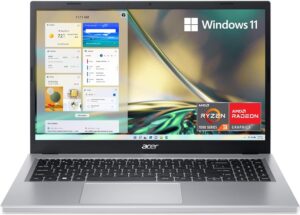💡 DIY Computer Fixes?
Grab my easy step-by-step guide and keep your computer running like new.
The Big Question About Windows 11 Upgrade
If you own a computer that’s a few years old, you’ve probably already seen a message from Microsoft letting you know that your device isn’t eligible for the Windows 11 upgrade. For many people, this has caused a lot of worry and confusion.

Microsoft has confirmed that support for Windows 10 will officially end on October 14, 2025. After that, there will be no more security updates, and running Windows 10 could put your computer at risk. But here’s the good news: you don’t need to panic.
In this guide, I’ll walk you through everything you need to know about the Windows 11 upgrade, especially if your PC can’t handle it. We’ll talk about what happens if you stay on Windows 10, what hardware upgrades might make your computer compatible, and affordable alternatives that can help you avoid spending big money at a big-box store.
Why the Windows 11 Upgrade Matters
The Windows 11 upgrade isn’t just about having a shinier, newer-looking operating system. There are real differences that matter for your security, your performance, and your everyday computer use.

Here’s why Microsoft is pushing people toward Windows 11:
Stronger Security – Windows 11 has higher security requirements, including something called TPM 2.0, which helps protect against malware and hackers.
Performance Improvements – Windows 11 is optimized for modern processors and SSDs, which makes it run smoother and faster on newer machines.
Long-Term Support – While Windows 10 support ends in 2025, Windows 11 will continue getting updates for years to come.
The reality is that Microsoft wants people to move forward. But what if your PC isn’t able to?
Step One: Find Out If Your Computer Is Eligible
Before worrying too much, it’s worth checking whether your computer is truly unable to handle the Windows 11 upgrade. Microsoft has strict system requirements, but some people assume they can’t upgrade when in fact they might be able to.
Here’s how to check:
Download the PC Health Check App from Microsoft’s official site.
Run the tool, and it will tell you instantly whether your computer meets the requirements for the Windows 11 upgrade.
If your computer fails the test, it will also list the reason—whether it’s your processor, lack of TPM 2.0, or something else.
Sometimes, the issue is as simple as needing to turn on TPM 2.0 in your computer’s BIOS settings. Other times, the processor may just be too old.
Option 1: Stick With Windows 10 (For Now)
If your computer can’t do the Windows 11 upgrade, the simplest solution is to keep running Windows 10 until Microsoft officially stops supporting it.
Here’s what you should know:
Security updates continue until October 14, 2025.
Your programs and files will keep working as they always have.
There’s no cost involved—you can just keep using your PC as is.
The downside? Once support ends, your computer will be more vulnerable to viruses, ransomware, and hackers. For casual web browsing and offline work, it might still be okay, but if you shop online, bank online, or handle sensitive information, it becomes risky.
Did you know there are options to keep Windows 10 until October 2026 for free?
Option 2: Try Affordable Hardware Upgrades
Sometimes your computer doesn’t pass the Windows 11 upgrade test simply because it’s missing a few requirements. Before you assume you need a new computer, it’s worth looking at possible upgrades:
Add More RAM – If you have less than 8 GB of RAM, upgrading can not only make your system snappier but also improve compatibility with modern software.
Switch to an SSD – If your PC still has a mechanical hard drive, an SSD upgrade can dramatically improve performance.
Enable TPM 2.0 – Many PCs made in the last 5–7 years already have TPM 2.0 but don’t have it enabled. Turning it on in the BIOS could solve your problem.
In many cases, a simple upgrade costing under $100 can extend the life of your computer and possibly make the Windows 11 upgrade possible.
Option 3: Buy a New Computer
If your PC is more than 7–8 years old, it might not be worth putting money into upgrades. At that point, buying a new computer can be a smarter investment.
The good news? New computers today often cost less than people expect. Entry-level laptops and desktops that are fully Windows 11 ready can be found for under $500, and they come with hardware that should last for years.
When shopping, keep these tips in mind:
Look for at least 8 GB of RAM.
Choose a model with a Solid-State Drive (SSD).
Make sure it clearly says Windows 11 compatible or already comes with Windows 11 installed.
Option 4: Explore Alternatives to Windows
If you’re not ready to spend money on a new computer and the Windows 11 upgrade just isn’t possible, there are other options:
Switch to Linux – Free operating systems like Linux Mint or Ubuntu can breathe new life into old hardware. They’re secure, fast, and good for web browsing, email, and office tasks.
Use Your Computer Offline – If you only need your PC for simple offline tasks like writing or photo storage, you can continue using Windows 10 safely after support ends (just avoid connecting it to the internet).
Cloud Computing – Services like Google Workspace or Microsoft 365 let you do most of your work online, so even an older machine can handle basic tasks securely.
Common Questions About the Windows 11 Upgrade
Will my programs still work on Windows 10 after 2025?
Yes, but newer versions of programs may stop supporting Windows 10. Over time, you may not be able to install updates or new software.
Can I force the Windows 11 upgrade on an unsupported PC?
There are unofficial ways to bypass Microsoft’s requirements, but it’s not recommended. Your system could become unstable, and you may not get important security updates.
Is it safe to stay on Windows 10 after support ends?
It depends on what you use your computer for. If you shop or bank online, the risks are higher. If you mostly use your PC offline, the risks are lower.
How much does it cost to upgrade to Windows 11?
If your PC qualifies, the Windows 11 upgrade is free for Windows 10 users. The cost only comes in if you need new hardware.
My Honest Advice

As someone who helps people with their computers every single day, I’ll be honest: if your PC is more than 7 years old, it’s usually better to start planning for a replacement instead of sinking money into it.
But if your computer is still fairly modern, a couple of upgrades might give you several more years of smooth performance—plus compatibility with the Windows 11 upgrade.
And here’s the thing: you don’t have to figure this out alone. That’s exactly why I do what I do. I offer affordable, honest computer help for people all over the U.S. My service is a flat $69.99 (or $59.99 for seniors), and if I can’t help, you don’t pay. No surprise bills, no upselling—just help you can trust.
Wrapping It Up: Your Windows 11 Upgrade Path
Here’s the bottom line:
Check your PC with Microsoft’s PC Health Check tool.
If compatible, take advantage of the free Windows 11 upgrade.
If not compatible, decide whether to keep using Windows 10 until 2025, upgrade hardware, or start planning for a new computer.
Explore alternatives like Linux or offline use if replacing your computer isn’t an option right now.

The Windows 11 upgrade may seem intimidating, especially if you’re not sure what your computer can handle. But with the right information and a little planning, you can make the transition smoothly—without breaking the bank.


